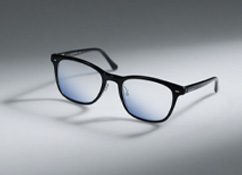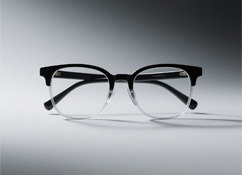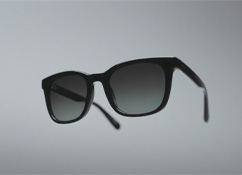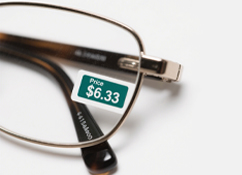Fun Fact: What’s a Monocle, Anyway? A Quick History of the Iconic Single Lens
Picture a classic British gentleman: tailored suit, pipe, cane, and that tiny glass lens dangling from his chest. That’s a monocle—but there’s more to this quirky accessory than meets the eye. Let’s dive into its history, why it was a hit, and why you rarely see it today.
What Is a Monocle?
A monocle is a single, circular lens worn in one eye—no nose pads, no arms looping over your ears. It stays in place by gently pressing against the eye socket, held by the muscles around your eye (sounds tricky, right?).
The Monocle’s Unexpected History
Early Days: More Tool Than Fashion
The earliest monocles popped up in the 1700s, but they weren’t for style. Italian antique collectors used them to inspect tiny details in carvings, paintings, and jewelry—checking for flaws or authenticity. Think of them as the original magnifying glasses, but sleeker.
Quizzing Glasses: The Monocle’s Fancy Cousin
From the 1700s to the mid-1800s, Europeans (even Karl Marx!) preferred “quizzing glasses.” These were like fancy hand-held magnifiers: small lenses on a handle, often decked out with jewels or intricate metalwork. People hung them around their necks, then held them up to read, examine trinkets, or even stare at others—whether to show surprise, tease, or just plain judge.
The Monocle Goes Mainstream (Thanks to Dandies)
In the early 1800s, the monocle became a fashion statement—all thanks to “dandies.” These guys were obsessed with style: perfectly tailored clothes, polished shoes, and accessories that screamed “I care about how I look.” For dandies, a monocle was as essential as a silk cravat or a gold lapel pin. It was perfect for “staring through to size people up” at parties, and by the mid-1800s, snug-fitting monocles (that sat right in the eye socket) replaced quizzing glasses as the must-have accessory for socialites.
WWII Propaganda: The Monocle Gets a Bad Rap
During World War II, Allied propaganda leaned into the monocle to paint Axis villains as cold and evil. Posters, cartoons, and movies often showed sinister Nazi officers with monocles, scowling menacingly. Suddenly, the monocle went from “classy” to “creepy” in popular culture.
The Fall of the Monocle
After the war, better eye care and lens-making changed the game. Glasses with two lenses—custom-fit to each eye, with comfy nose pads and arms—became more practical. Monocles, which were finicky to keep in place and only corrected one eye, pretty much faded away.
Do People Still Wear Monocles?
Sort of! Today, they’re mostly a novelty:
Vintage fashion lovers sometimes rock them for fun, like a retro costume piece.
They’re still a cultural symbol of old-world elegance (think posh British estates or period dramas).
But let’s be real: They’re not practical. Most people find them hard to keep in place—especially folks with shallower eye sockets (common in some ethnic groups), who struggle to hold them without nose pads or arms.
FAQ: All About Monocles
Q: Are monocles comfortable?
A: Not really. They take practice to keep from falling out, and they can feel awkward pressing against your eye.
Q: Did monocles actually help with vision?
A: Some did! Custom-made monocles could correct nearsightedness or farsightedness in one eye. But they were never as effective as two-lens glasses.
Q: Why do we associate monocles with rich people?
A: Dandies and elites popularized them, and they were often made with expensive materials (like gold frames or rare glass). Plus, only folks with time to fuss with a finicky accessory would bother!
So, Would You Try a Monocle?
It’s a fun piece of fashion history, but let’s be honest—glasses (or contacts) are way easier. Still, there’s something charming about this tiny lens that once ruled the red carpet. Would you rock one for a costume party? We won’t judge.











